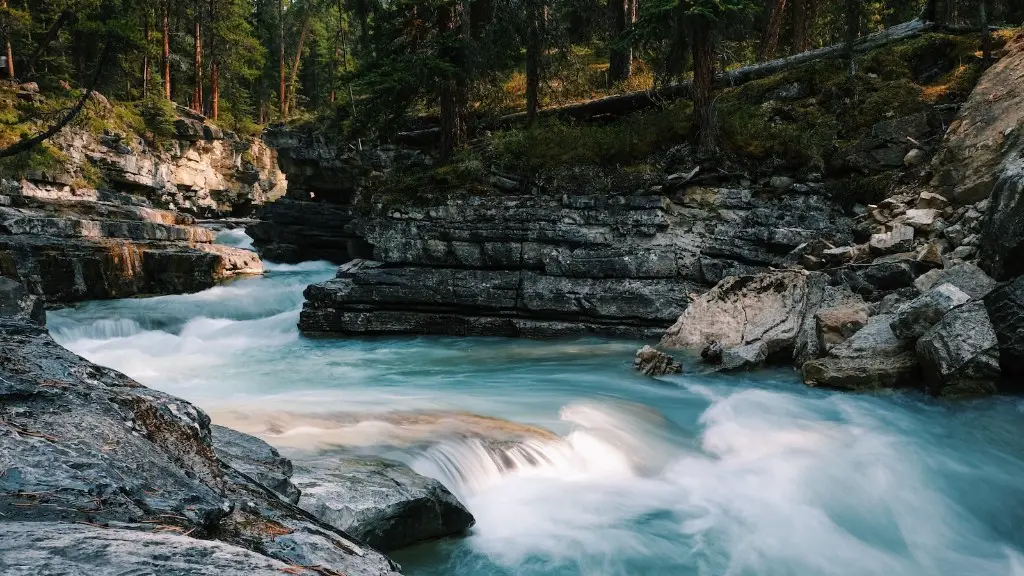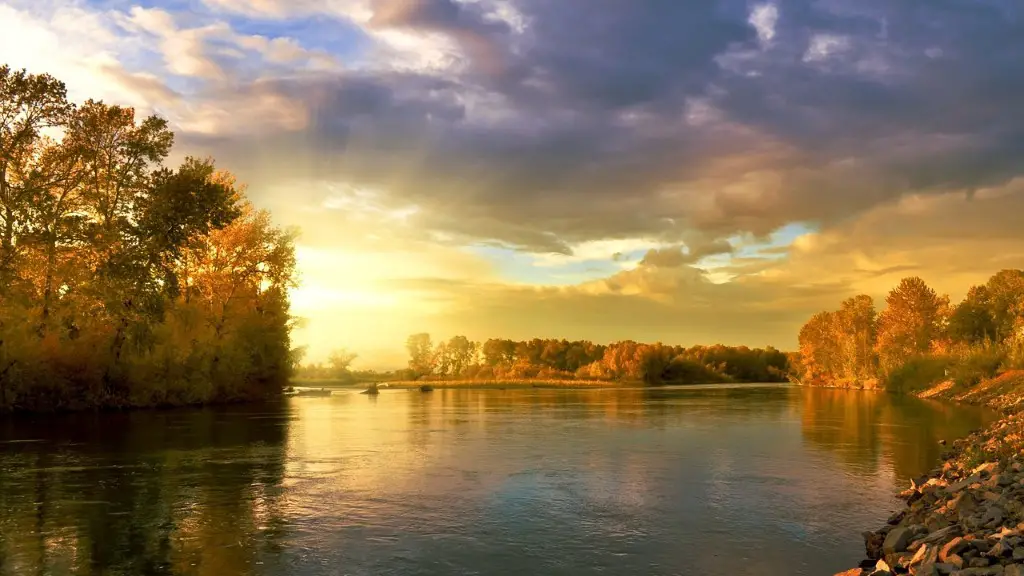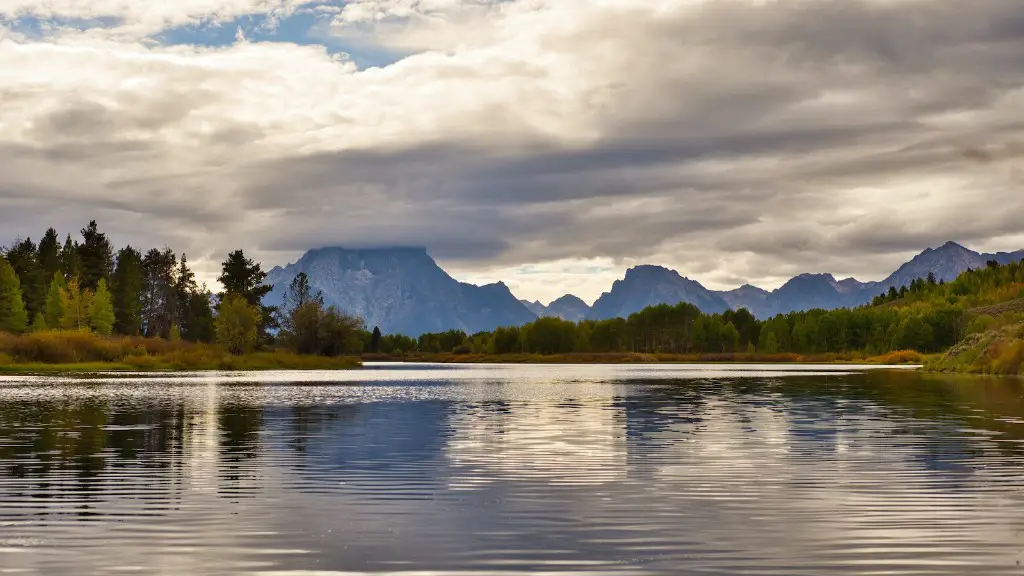The Mississippi River is one of the longest rivers in the world. It begins in Minnesota’s Lake Itasca and empties into the Gulf of Mexico, spanning over 2,300 miles. How was this impressive waterway formed?
The Mississippi River Basin was formed by glaciers during the most recent glacial period around 18,000 years ago. The Mississippi River started as a slow-moving, shallow layer of meltwater that accumulated in the basin, unable to flow across the land. Over thousands of years, the river became deeper and wider as the glaciers melted, and began to take its current shape.
As the glaciers receded, sediment that had been deposited across the landscape by the melting waters of the Ice Age was gradually transformed by the power of the river into rich, fertile soil. This sediment also played an important role in the river’s meanders, or bends, which formed in the landscape as a result of the ongoing erosion by the river’s current. The meanders have become an iconic feature of the region, with the river winding its way through the landscape, creating oxbow lakes, wetlands and islands.
Today, the Mississippi River is influential in the lives of millions of people who live along its banks. The river and its tributaries are used for commerce, recreation, drinking and irrigation, and form an essential part of the area’s economic and cultural heritage. The river is also home to a vast range of species, including numerous species of fish, birds and mammals, which are dependent on this unique and complex habitat.
The Mississippi River is an impressive and remarkable natural formation. Its vastness, beauty, and power have captivated people throughout history. The history and dynamics of the river have allowed the landscape to evolve and adapt with time, creating a unique and inspiring ecosystem that is integral to the lives of its inhabitants.
Relocation of the Lower Mississippi River
The Lower Mississippi River has experienced a number of significant changes in its course over the past two centuries. The river has shifted its course to the east and south several times, although human activities have been largely responsible for the changes. In addition to dredging for barge and ship channels and levee construction, many of the channels have been moved for agricultural purposes, such as flooding for farmland or for improving drainage for farms.
In some instances, the relocation of the Lower Mississippi River has had a positive effect on the environment. In other cases, it has had devastating effects on the river’s habitats and wildlife. The relocation of the river has created new problems, as the changes can disrupt existing habitats, introduce new invasive species, and alter the natural flow of the river. The relocation of the river can also affect the local economies, as it can lead to a decrease in tourism, recreation, and other economic activities that are dependent on the river.
The relocation of the Lower Mississippi River remains an ongoing problem and will likely continue to pose challenges in the future. In order to protect the river’s resources, it is important to understand the dynamics of the local environment, and to develop effective management plans that can help to sustain the river’s habitats, species, and economic activities.
Impact of Human Activity Along the Mississippi River
Human activity along the Mississippi River has had a significant impact on the environment and the ecology of the river. The construction of levees, dams and other types of infrastructure have altered the natural dynamics of the river, blocking water from entering its channels and disrupting the natural flow of the river. In addition, the loss of natural habitats along the river, including wetlands and floodplains, has destroyed habitats for wildlife, reduced water quality and hampered the ability of the river to support a diverse range of species and ecosystems.
In addition to altering the ecology of the river, human activity has also had an impact on the economy. The dredging of the river for barge and ship channels, as well as the construction of dams and other infrastructure, has reduced the river’s ability to support commercial activities. In the past, the river was used by steamboats to transport goods and people; however, due to the changes in the river’s characteristics, this type of traffic has decreased significantly.
The changes to the river’s environment and economy are a cause for concern. In order to protect the river and its resources, it is important to understand the impacts of human activity, and to develop strategies to mitigate the impacts of these activities. This includes developing strategies for restoring habitats, maintaining water quality, and promoting sustainable economic activities that are compatible with the river’s ecosystem.
Conservation Efforts Along the Mississippi River
In recent years, there has been an increased effort to protect and conserve the resources of the Mississippi River. Many conservation organizations have made it their mission to protect the river from pollution and sustain its resources. These organizations are actively involved in advocating for the protection of the river through education, outreach, and advocacy. They are also working with local, state, and federal governments to develop policies that protect the river’s habitats and species.
In addition to conservation organizations, the Mississippi River is also being protected by state and federal agencies. These agencies have enacted laws and policies that aim to protect the river’s resources and its inhabitants. These include regulations to limit pollution, maintain water quality, and to protect wildlife habitats. It is important to note that although these efforts are beneficial, they may not be enough to protect the river and its resources.
In order to ensure the sustainable use of the river, it is important to engage with all stakeholders. This includes the local communities, businesses, and industries that rely on the river’s resources. These stakeholders can participate in efforts to protect the river by working to reduce their impact on the river, engaging in conservation projects, and advocating for the protection of the river.
The Future of the Mississippi River
The future of the Mississippi River depends on the willingness of all stakeholders to protect the river and its resources. Conservation efforts must be sustained and increased in order to ensure that the river is protected for future generations. In recent years, there have been significant efforts to restore and protect the river, but more must be done to ensure its long-term sustainability. This includes a comprehensive effort to monitor the river’s condition, to improve water quality, and to protect habitats, species, and other resources along the river.
In addition, it is important to continue engaging with all stakeholders. This includes local communities, businesses, and industries. Working together to protect the river is essential for preserving its resources for future generations and for creating a healthier, more resilient river and landscape.
Urbanization Along the Mississippi River
The growth of urban centers along the Mississippi River has had a significant impact on the environment and the ecology of the river. Increased runoff from roads, buildings and other impermeable surfaces has led to an increase in pollution and a decrease in water quality. This has had a negative effect on the river’s habitats, species and other resources.
Urbanization has also had an effect on the local economy. The increase in population in these areas has led to a decrease in tourism and recreational activities. This has had a negative impact on local businesses and economies that are dependent on these activities.
In order to protect the habitats, species, and other resources of the Mississippi River, it is important to take action to reduce the impacts of urbanization. This includes making sure that new development projects are designed to reduce runoff, maintain water quality, and protect sensitive habitats. It is also important to ensure that communities that live along the river are connected and have access to resources and services.
Flooding Along the Mississippi River
Flooding is a natural occurrence along the Mississippi River, due to the influx of large amounts of water during periods of heavy rainfall. Floods can cause significant damage to property and livelihoods, and cause environmental harm due to increased sedimentation and loss of aquatic life. In recent years, flooding along the Mississippi River has become more frequent and intense due to changes in the climate, increased runoff from impermeable surfaces, and development along the river.
In order to reduce the damaging effects of floods, it is important to enact policies to manage development, reduce runoff, and protect floodplains. It is also important to implement emergency preparedness plans to help communities prepare for and respond to floods. In addition, flood control measures, such as levees and floodways, can be used to help minimize the impacts of flooding.
Flooding is a challenge that we must face in order to protect the Mississippi River and its inhabitants. It is important to understand the dynamics of the river, and to use this knowledge to develop strategies that can ensure the protection of its resources and habitats.





